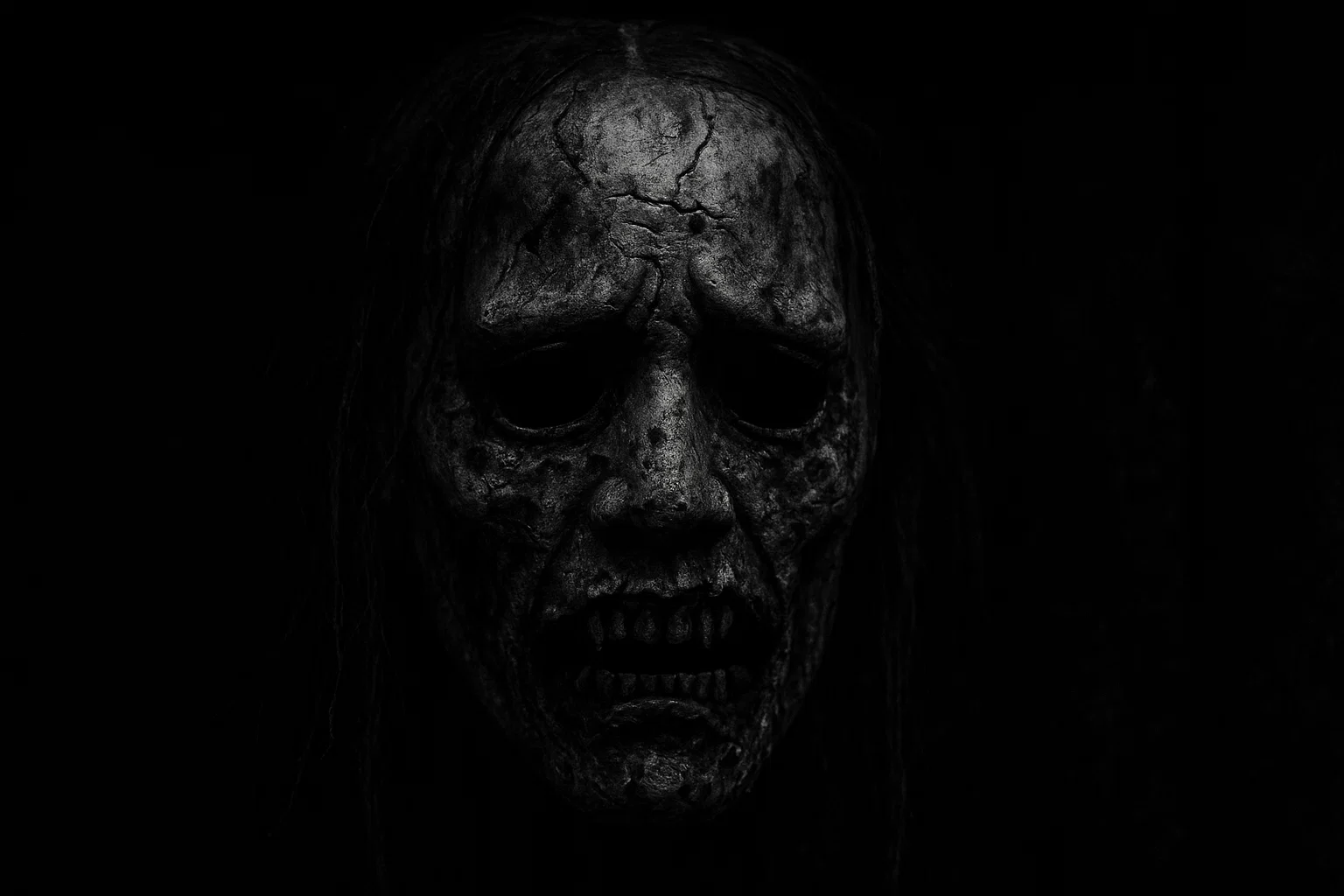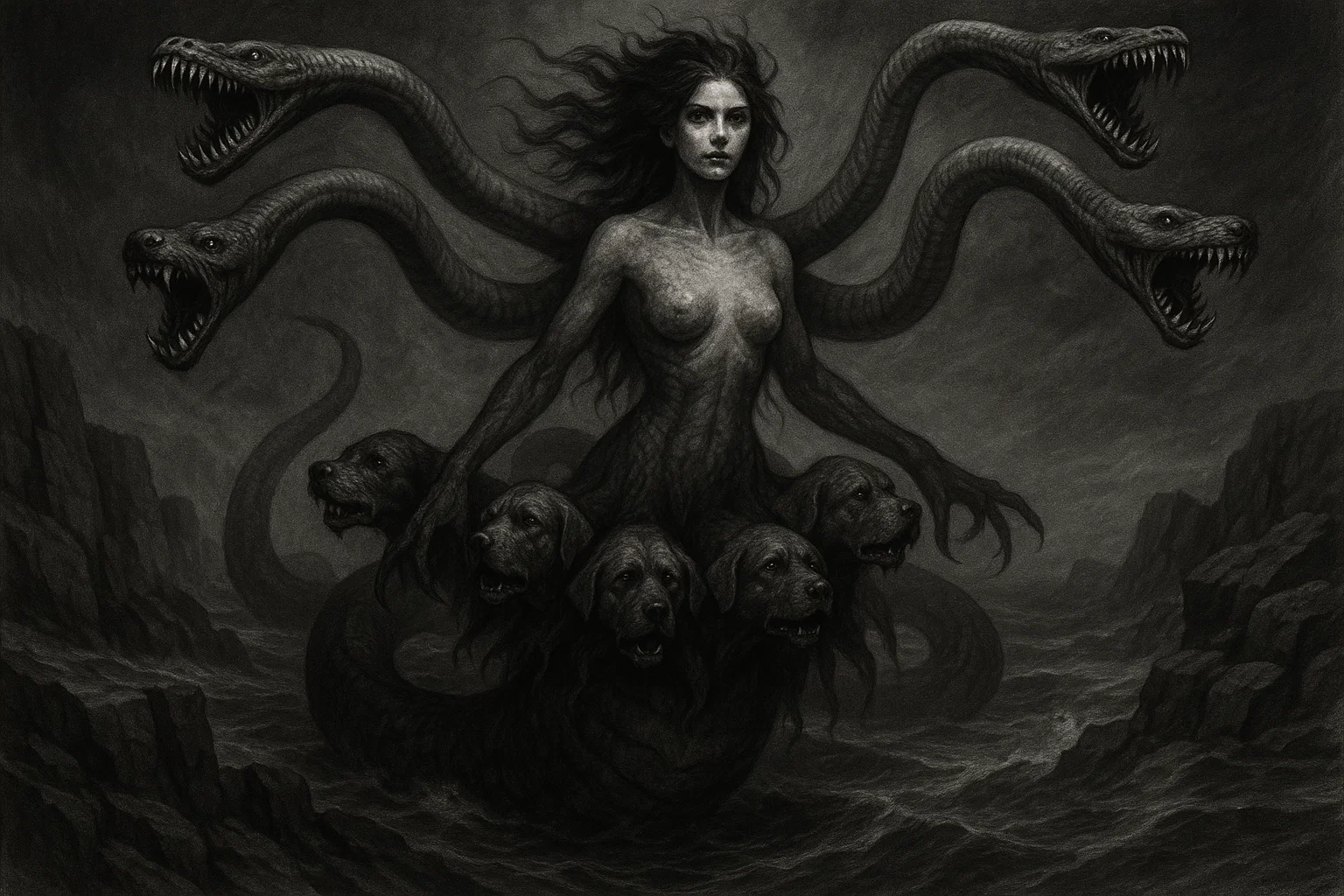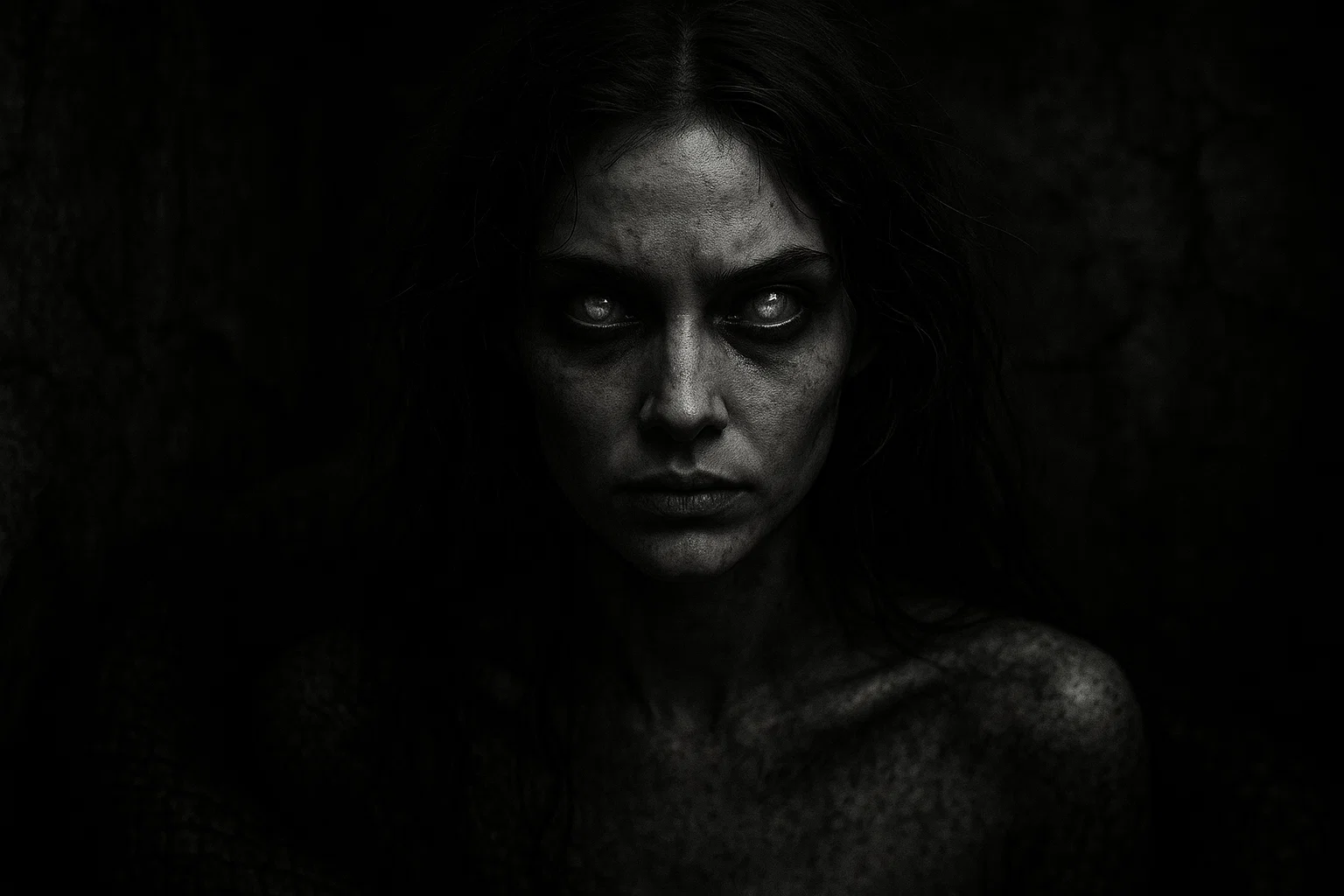In Tokyo’s frenetic heart, where skyscrapers tower over ancient shrines, the past is never truly gone. Noh masks, revered for their role in traditional Japanese theater, line the stalls of Asakusa’s markets, their carved faces whispering of centuries-old stories. Most are mere relics, but one—a cursed mask born from a rotting tree in Aokigahara, the Suicide Forest—carries a malevolent hunger.
Sora Nakamura was 19, a university student with a razor-sharp mind and a restless soul. Raised in Tokyo’s Shibuya district, she was a skeptic, her passion for science at odds with her grandmother’s tales of yōkai and cursed objects.
Sora’s ambition was her driving force—she dreamed of curating a groundbreaking museum exhibit on Noh theater, a project that could secure her a prestigious scholarship. But her confidence masked a deeper wound: her father’s relentless criticism, his voice a constant echo: You’ll never be enough.
Her roommate, Aiko Tanaka, was 22, a free-spirited artist with a love for the occult. Aiko’s dyed-blue hair and patchwork kimonos hid a childhood trauma—she’d seen a shadow move in her family’s old house, a memory she buried but never escaped. Their friend Ren Hayashi, 20, was a history major with a quiet intensity.
His obsession with Edo-period artifacts stemmed from his mother’s death, which he believed was linked to a family heirloom. Ren’s guilt fueled his need to uncover the past, but his temper flared when challenged, a trait he feared he’d inherited from his volatile father.
The trio met at a university lecture on Noh theater, where a professor mentioned the cursed mask—a tale Sora dismissed as superstition. Aiko, intrigued, scoured online forums, finding posts about Emily Parker’s disappearance and the mask’s dark history.
“It’s out there,” Aiko said, her eyes alight. “In Tokyo, maybe in some dusty shop.” Ren, digging through historical records, uncovered references to a mask tied to the Onin War, the Great Edo Fire of 1657, and even Hiroshima before 1945, its owners always doomed.
Sora rolled her eyes but felt a spark of ambition.
“If it’s real, it’d make my exhibit legendary,” she said, half-serious. The idea grew, and the three agreed to search for the mask, driven by curiosity, obsession, and a thrill they couldn’t name.
The antique shop was a relic in Asakusa, its sign faded, its windows clouded with grime. Inside, the air was thick with incense and the musty scent of old wood, shelves cluttered with porcelain cats, tarnished swords, and cracked lacquer boxes.
Sora’s pulse raced as she scanned the room, her skepticism warring with a creeping unease. Aiko drifted to a corner, her fingers brushing a silk fan, while Ren examined a rusted tsuba, his jaw tight. The shopkeeper, an elderly woman with eyes like black marbles, watched them, her smile too sharp, too knowing.
You May Also Like: The Edge of Nothing | Horror Story
“There,” Aiko whispered, pointing to a wooden Noh mask on a high shelf.
It was plain, its surface smooth as bone, yet mesmerizing. Its expression shifted under the dim light—joy, despair, rage, love—all in a single glance. Sora felt a pull, like a hand on her heart, urging her closer.
“It’s perfect,” she murmured, visions of her exhibit flashing in her mind. Ren’s voice was low, urgent: “Sora, it’s wrong. Don’t.”
But the shopkeeper was already there, her hands trembling as she lifted the mask.
“A special piece,” she said, her voice a rasp. “Yours for 500 yen.”
The price was absurdly low, a red flag, but Aiko’s occult fascination drowned her caution.
“We have to,” she urged.
Sora hesitated, her father’s voice snarling: You’re nothing. She paid, the mask now hers, its weight heavier than it should have been.
Back at their cramped apartment, the mask sat on the kitchen table, its presence a silent pressure. Sora tried to focus on her exhibit proposal, but her eyes kept drifting to it, its expression now mocking, now pleading.
Aiko sketched it feverishly, her lines jagged, her fingers smudged with charcoal. Ren, reading about tsukumogami—objects that gain souls after a century—grew pale. “This isn’t just a mask,” he said, his voice shaking. “It’s alive.”
That night, the apartment felt wrong, the air sour with rot. Sora woke at 3 a.m., her throat parched, the mask’s silhouette looming in the dark. She heard whispers—her name, her fears, her father’s voice: Failure.
She stumbled to the kitchen, splashing water on her face, but the sink’s reflection showed her eyes too wide, her mouth twisted. She blinked, and it was gone, but her hands trembled as she shoved the mask into a drawer, locking it.
The disturbances grew. Aiko’s nightmares began—visions of Aokigahara, its trees bleeding, their branches forming faces that screamed her name. She woke gasping, her sketchbook open to a drawing she didn’t recall: the mask, its mouth a void, her own face trapped inside.
“It’s watching me,” she whispered, her nails digging into her palms, blood welling.
Ren saw shadows in the corners—his mother, her eyes empty, pointing at the mask. He tried to smash it with a hammer, but the tool shattered, the mask untouched, its surface gleaming. Sora’s ambition twisted into obsession.
She stared at the mask for hours, convinced it held the key to her success. Her exhibit notes became erratic, filled with phrases like it speaks and it knows. Her reflection in mirrors warped, her skin graying, her eyes sinking.
You May Also Like: The Curse of Nam Koo Terrace | Horror Story
Desperate for answers, Sora turned to research. She scoured university archives, online forums, and obscure texts, piecing together the mask’s history.
She found a 16th-century scroll describing a wandering artisan named Kaito, who arrived in a village near Nagano around 1500. Kaito was an enigma, his origins unknown, his demeanor unsettling. He spoke little, his eyes always distant, as if listening to voices no one else heard.
Villagers whispered he was touched by spirits, perhaps a yōkai in human form. Kaito set up a workshop, carving Noh masks of unearthly beauty, but his true obsession was a single project—a mask unlike any other.
Kaito ventured into Aokigahara, the Suicide Forest, a place shunned for its restless spirits. There, he found a massive, gnarled tree, its bark black and rotting, its roots twisting like veins.
The air around it hummed, the ground cold, and Kaito heard whispers—his name, his desires, his fears. The tree pulsed with a presence, ancient and malevolent, perhaps a yōkai or a tsukumogami born from centuries of despair.
Ignoring the chill down his spine, Kaito felled the tree, dragging its wood to his workshop. He worked in isolation, the village growing uneasy as strange noises—scratching, laughter, muffled screams—echoed from his shack. Lights burned all night, and some swore they saw shadows dancing in the windows, shapes that weren’t human.
After a year, Kaito emerged with the mask. It was simple yet hypnotic, its wood glowing with an inner light. Its expression shifted with the angle—joy, despair, rage, love, all captured in a single face.
Villagers who saw it felt a pull, a mix of awe and dread. Kaito, gaunt and hollow-eyed, declared it his masterpiece. That night, he donned the mask, and a scream tore through the village, raw and inhuman. Fishermen found him dead, the mask still on his face.
When they removed it, his skin was rotten, his features twisted into a grotesque parody of pain, as if the mask had drained his soul. His body aged centuries in moments, his bones brittle, his eyes sunken pits. The workshop was a ruin—tools shattered, walls scratched with frantic marks, as if Kaito had fought something unseen.
The mask passed to a villager, Taro, who prospered briefly—his crops flourished, his debts vanished.
But soon, nightmares consumed him, visions of bleeding trees and eyeless faces. He heard Kaito’s voice, begging, cursing. Taro wandered the streets, muttering, before collapsing, his face mirroring Kaito’s—a mask of terror.
You May Also Like: Red-Room.exe | Horror Story
The village tried to destroy it—fire, hammers, the river—but the mask endured, unscathed. Plagues followed: fires razed crops, rivers choked with dead fish, animals withered. Desperate, the villagers tricked passing travelers into taking it, and the curses ceased.
The mask vanished, only to resurface in Kyoto during the Onin War, where a samurai who owned it went mad, slaughtering his family. It appeared in Edo during the 1657 fire, its owner burning alive while the mask lay untouched. In Hiroshima, a priest who held it before 1945 died raving, his skin peeling as if scorched from within.
Sora’s research deepened her fear. The mask’s wood, some texts claimed, was cursed by a yōkai that fed on ambition and despair, binding itself to the tree in Aokigahara.
Others suggested it was a tsukumogami, the tree’s spirit awakened after centuries, twisted by the forest’s suicides. The mask’s power lay in its ability to mirror its owner’s desires, granting them briefly before consuming their life force. Every owner followed the same path: fortune, madness, death.
Sora stared at the mask, now back on the table despite the locked drawer, and wondered: was this Kaito’s mask? The same one that had killed him, Taro, and countless others? Its surface was identical to the scroll’s description—smooth, glowing, alive.
The apartment became a battlefield. Lights flickered, casting shadows that pulsed like veins. The air reeked of rot, the walls sweating black ooze. Aiko’s nightmares bled into waking life—she saw Kaito in her sketches, his face rotting, his hands reaching.
She carved the mask’s outline into her arm, blood pooling, her voice a whisper: “It’s him. Kaito.”
Her body wasted away, her eyes feverish, her sketches now violent—disembodied hands, eyeless faces, Kaito’s scream frozen in charcoal. Ren’s guilt consumed him; he saw his mother in every shadow, her voice merging with Kaito’s: You failed me.
He tried to burn the mask, but the flames parted, scorching his hands. His temper erupted, his fists smashing mirrors, blood mixing with the ooze. “It’s in my head!” he screamed, his mother’s face twisting into Kaito’s.
Sora’s mind frayed fastest. Her research fueled her obsession, the mask’s history a mirror to her ambition. She saw her father everywhere—his sneer, his belt, his voice a roar: You’re nothing. The mask’s whispers became commands: Prove yourself.
You May Also Like: The Last Ride at Midnight | Horror Story
She locked herself in her room, writing manifestos of madness, her notes filled with Kaito’s story, his screams, his curse. She clawed her face, convinced her skin was wrong, too tight, not hers. Blood streaked her cheeks, her mirror reflecting Kaito’s face—a rotting mask over her own.
One night, the trio converged in the kitchen, drawn by a hum—a heartbeat in the walls. The mask was on the table, though none had moved it. Aiko’s knife gleamed, her arm dripping, her eyes empty.
“Kaito wants us,” she said, raising the blade toward Ren.
He lunged, grabbing her wrist, but his hands tightened, bruising, Kaito’s rage in his veins. Sora laughed—a broken, jagged sound—as she lifted the mask, pressing it to her face.
“I’m enough,” she said, her voice layered with Kaito’s, ancient and ravenous.
The room pulsed, the shadows writhing—not figures but emotions: Kaito’s despair, his yōkai’s hunger, the forest’s grief. Aiko’s knife slashed Ren’s arm, blood spraying. He roared, tackling her, his hands around her throat, Kaito’s voice screaming: Finish it.
Sora tore at her hair, nails ripping scalp, the mask falling but its curse lingering, her mind a storm of her father’s cruelty and Kaito’s screams.
Dawn broke over Tokyo, cold and gray. Police stormed the apartment, called by neighbors who’d heard screams. The air was sour, the walls stained with ooze.
Sora sat against the wall, her face a ruin of scratches, her eyes vacant, muttering Kaito’s name. Ren lay in blood, his arm gashed, his breathing faint. Aiko was curled in a corner, her knife beside her, her arm carved with the mask’s shape, her heart still.
The mask sat pristine on the table, its expression serene. Police bagged it, but it vanished from evidence, later spotted in a Shinjuku pawn shop. Sora and Ren survived, their minds shattered, their words fragments of Kaito’s story.
Aiko’s body was cremated, her sketchbook burned, its pages too horrific to keep. The apartment was sealed, deemed cursed. Locals spoke of shadows in the windows, a hum in the walls.
In Tokyo’s endless markets, the mask waited, its next owner already drawn by an inexplicable pull, Kaito’s curse eternal, his scream echoing through time.







